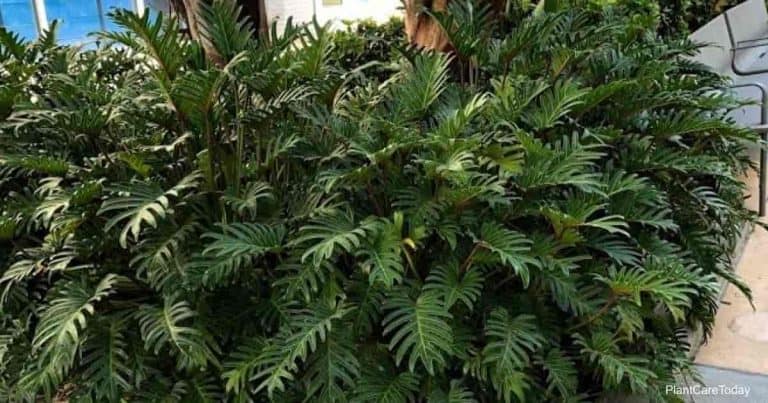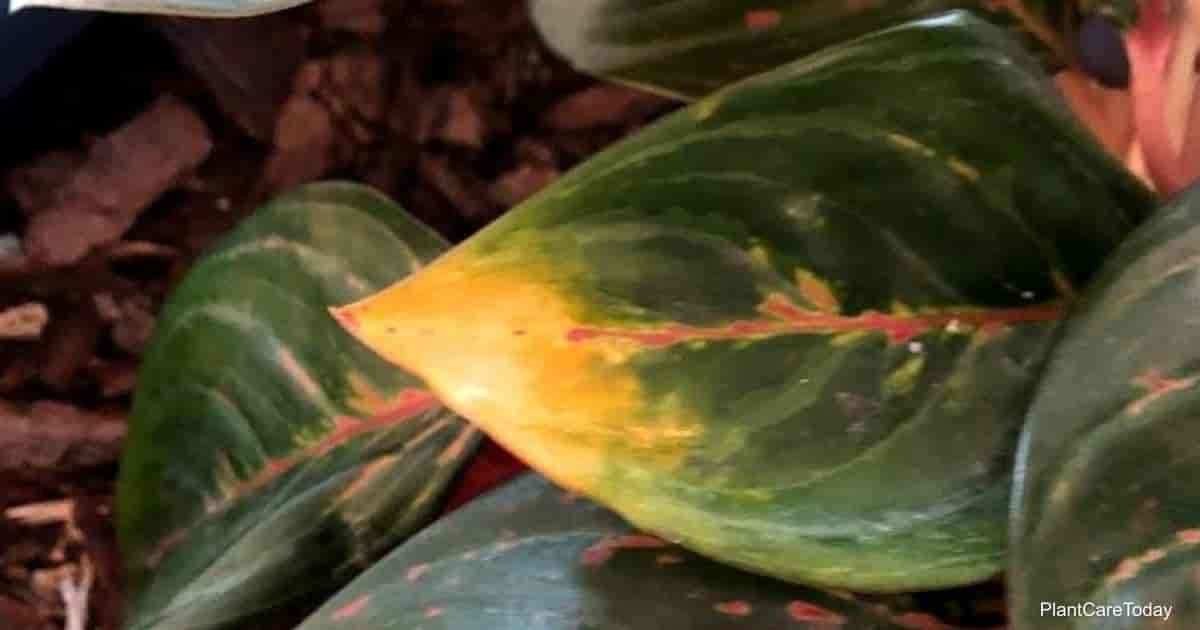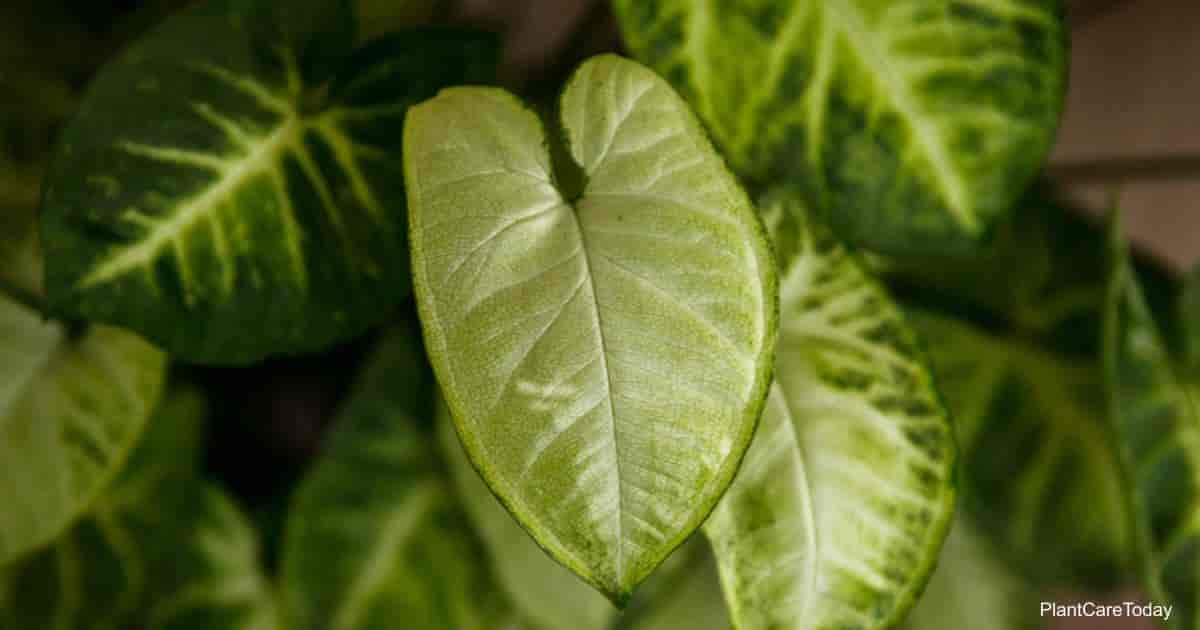Philodendron Xanadu [fil-oh-DEN-dron, zan-AH-doo] is a plant with a questionable past and well-loved present and one of around 450 known species of philodendron.
It belongs to the Araceae family and hails from Southeastern Brazil.
The species has been the subject of much misinformation, beginning with a 1983 claim it was a hybrid created from Philodendron bipinnatifidum (also referred to as Philodendron selloum) in an Australian nursery.
While Xanadu and bipinnatifidum come from the same Miconostigma sub-genus, the two plants have no other direct connection.
It has further been proven Xanadu existed in the Amazon rainforests prior to its “discovery” in Australia.
Due to the misinformation, Xanadu has two nicknames, its cultivar name Winterbourn and Aussie.
Unlike most Philodendrons, Xanadu is a standalone plant instead of a climber. Check out the sturdy Moonlight Philodendron.
Philodendron Xanadu Plant Care
Size & Growth
Evidence suggests the chemical process used to create tissue cultures of this plant have stunted its growth, making the domestic variant notably smaller than its wild forebears.
It has the potential to reach 2′ to 4’ feet tall and 3′ to 5’ feet wide when properly cared for using ideal conditions eventually forming dense clumps with unique leaf shapes.
The lobed leaves of this beautiful foliage plant can grow 16″ to 18” inches long and 7″ to 14” inches wide with 15 to 20 distinct lobes per leaf.
This smaller plant is perfect for those who do not have room for the larger split leaf philodendron variety.
Flowering and Fragrance
Xanadu is an aroid, producing a spathe and spadix.
The spathe is a reddish-violet, with some having malformed inflorescence due to tissue culture chemicals.
The spadix is pointed with numerous tiny flowers.
Light & Temperature
Xanadu prefers bright, indirect light, with the leaves changing to a darker green when in lower light levels.
The plant gets sunburned easily in full sun, causing the leaves to turn brown or die completely.
Light shade is ideal for this plant, but it can survive in partial shade since the aerial roots run along the soil surface.
If the stems are long and leggy with gaps between leaves then the plant is likely not getting enough light.
Philodendron xanadu is a tropical plant and doesn’t fare well in cold temperatures and needs to be kept indoors in warmer climates.
Avoid drafty areas, especially in winter.
It fares best in temperature above 55° degrees Fahrenheit (13° C).
It fares best outdoors in USDA hardiness zones 10-11 but is capable of surviving in zone 9a with enough care.
Watering and Feeding
While Xanadu does well in average household humidity, it thrives when in high humidity or misted regularly.
Over-watering may cause disease or yellowing of the leaves.
Generally, it is best to wait until the top 1″ to 2” inches of soil has dried before adding more water.
Less water is needed during winter.
Feeding times for Xanadu change throughout the year.
It requires no food in winter, monthly feeding in spring and autumn, and every other week during the summer.
Choose a well-balanced plant food and dilute it by half for the best results.
Always apply to damp soil.
Soil & Transplanting
- Being native to rain forests, this plant loves a potting soil rich in organic matter.
- The soil pH should range between 5.6 and 7.5.
- Whether you pot or plant in an outdoor garden, ensure the soil is well-drained.
- Winterbourn may be grown in a pot 2″ to 3” inches larger than the root ball.
- Stick to pots with drip holes to help prevent overwatering.
- Transplant to larger pots when the roots begin filling the pot for a happy plant.
Grooming and Maintenance
When properly fed and watered, Xanadu plants are very low-maintenance.
Check regularly for signs of disease or infestation.
The plant may be safely pruned as needed to remove yellowed leaves or excess growth.
Simply clip the leaf where it meets the main stem.
As new leaves form, some older leaves will yellow and die.
Removing these on occasion will not only keep the plant lush, it can reduce the risk of mold and related problems caused from trapped moisture.
How To Propagate Winterbourn
Xanadu Philodendron doesn’t seed and relies on cross-pollination when in anthesis.
It’s a natural divider.
Manual propagation is achieved by dividing the bulbs, corms, rhizomes, or tubers.
Xanadu Pest or Disease Problems
Members of the Philodendron genus are toxic when ingested by humans or pets.
Symptoms in humans include swelling of the lips and tongue, as well as nausea and possible vomiting.
The plant is susceptible to aphids and mealybugs and may become infested with spider mite if allowed to become too dry.
Fungus gnats or mold may appear if dried leaf husks aren’t removed occasionally.
Root rot from overwatering, a bacterial disease, and leaf spot disease are all major concerns for any Philodendron plant.
Placing Xanadu where there are good air circulation and cooler overall air will help prevent disease.
Dry leaves will also help when outdoors, although this plant loves a good misting indoors to improve humidity.
Suggested Philodendron Winterbourn Uses
- Xanadu is an excellent houseplant, thriving as well indoors as out.
- Outside it makes for a lush shrub to complement most garden designs.
- Indoors, the glossy green leaves add beauty to any room.
- Be careful to keep it out of reach so any children or pets won’t attempt to eat it.
- Due to its love for humidity, this plant is an excellent accent for a well-lit bathroom.
- When growing as an indoor plant, keep it near a window but avoid direct sun.
- You may also choose to use a bright indirect light source such as a UV lamp with the bulb directed away from the plant itself.
Credit : Gary Antosh (https://plantcaretoday.com/philodendron-xanadu.html)





